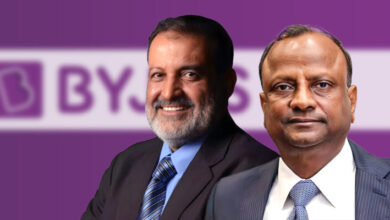
Diversity, equity, and inclusion (DEI) work environments have been challenging for organisations for years, but the events of 2020 brought into focus how ineffective most are at fostering DEI efforts.
Following COVID-19‘s devastating impact on unemployment trends across the U.S., the Center on Budget and Policy Priorities found in October that Black and Latinx workers have experienced much slower employment recovery than white workers. In August 2021, the unemployment rate for Black employees was 8.8%, for Latinx workers was 6.4 per cent, and for white workers was 4.5 per cent.
Women lost jobs at a far faster rate than males in the past year, indicating that the recovery rates are not ethnically specific. According to Oxfam International, the epidemic cost at least $800 billion in earnings to women worldwide. The figures are shocking, and they highlight the need for widespread adjustments to ensure that underrepresented groups have more sustainable and inclusive working environments.
DEI is critical to company success since it not only allows for culturally diverse workforces. Last year, McKinsey reaffirmed that the most varied organisations are now more likely than ever to beat their less varied rivals in terms of profitability, demonstrating that DEI has a significant impact on business results.
However, development is gradual. What is the explanation behind this? Businesses are placing diversity on the front burner without implementing equitable and inclusive mechanisms to foster a varied workplace culture. The fact is that you must commit to fair and inclusive efforts that assist all employees before you can establish a genuinely diverse workforce.
Your DEI initiatives will fail if you don’t deliver appropriate programming and inclusive workplaces, no matter how diverse your staff is. Companies must reconsider their strategy and refocus on favouring equality and inclusion over diversity, focusing on EID rather than DEI.
Why does equity have to come first in DEI?

As a Black woman who has focused on the employee experience — recruiting people, creating teams, and now heading diversity initiatives at a security technology firm — I have direct experience with workplace racism and prejudice. Companies have repeatedly invited me into their company to improve diversity, even though they lack basic practices and policies to support a diverse workforce.
It doesn’t matter how hard I tried to create chances for individuals who looked like me; it was never enough until I provided them with the resources and atmosphere they needed to thrive. Discrimination complaints were frequently denied, and appeals for assistance were often disregarded. New employees who entered a firm with high hopes for the future would rapidly grow dissatisfied with their working conditions. The absence of a focus on equity was the missing common denominator in these failures, not a lack of diversity.
It’s critical to distinguish between equity and equality for both employee experience teams and diversity leaders. It would help if you recognised that each employee comes to their work with a unique set of requirements to implement equity into your DEI activities. While equality is providing everyone with the same resources, equity entails providing individual workers with resources and opportunities tailored to their requirements to achieve the same degree of success as their peers.
Suppose companies want to change the way they think about diversity and inclusion. In that case, they must first ask themselves, “How can we develop an equitable and inclusive foundation that will lead to growing and maintaining diverse talent?”
Getting rid of the wage disparity
Conducting a pay analysis is the first step toward embracing fairness and ensuring that all workers have equal access to job opportunities and remuneration. Historically, minority groups have been unable to achieve equal pay and opportunity, posing a major stumbling block for most DEI projects. Many organisations didn’t perform pay analyses until recently, let alone give transparency for wage ranges and pay scales across the organisation.
A comprehensive yearly analysis should be carried out to assess your organization’s growth and identify your deficiencies. A pay analysis, when done correctly, will expose your company’s pay equity by race, gender, and age.
Equal compensation for equal work is provided by truly egalitarian systems, regardless of ethnicity or gender. This is a region where companies are still having difficulty. According to a PayScale poll from two years ago, Black men earned 87 cents for every dollar made by a white man, while Latino men earned 91 cents.
The income disparity between men and women is considerably more significant, with women reaching 84 per cent of what males did last year. “It would take an extra 42 days of labour for women to earn what males did in 2020,” according to Pew Research.
The primary objective is to reduce the wage gap so that Black employees and people of colour are paid equally to white employees, and women are paid equally to men.
It’s not a lack of skill that’s the issue; it’s a lack of vision.
One of the most common objections I hear about DEI is that firms want to be more diverse yet can’t locate varied people. Too frequently, the allegation is made that there is a skills shortage, particularly in the technology business, where occupations are defined by technical ability. However, the skills scarcity is a fallacy, and what’s going on is a lack of hiring vision.
Businesses are prone to focusing their hiring efforts on incorrect criteria, such as years of experience or specific skill sets. Due to this strategy, many underrepresented groups are denied chances that might lead to long-term employment or enough training to obtain particular skills.
If a candidate possesses the necessary characteristics, such as resilience, inventiveness, and drive, they will quickly master whatever technical skills are required to perform the job. Companies must recognise that a person’s unique experiences and inherent skills make them a valuable candidate, and they must be deliberate in their recruiting methods, looking beyond years of experience.
This approach will not work for all available positions. Still, if there is room for training and learning, teams may make significant progress toward their diversity targets by broadening their definitions of the “ideal” candidate.
Why are ERGs so important?

Before you can start making significant changes, you must first have a thorough awareness of your company’s current culture and any gaps that may exist. While salary analysis is a vital step, creating support mechanisms for your employees through employee resource groups is also essential (ERGs).
ERGs come in various forms, including groups for women, Black employees, Latinx employees, and LGBTQ employees, to mention a few, and provide a wealth of support to employees across the firm.
Successful ERGs provide:
- The backbone of your inclusion efforts.
- Fostering camaraderie and providing workers with safe.
- Inviting locations to tell their stories.
ERGs not only assist your business in better serving underrepresented groups, but they also help leadership get an improved awareness of various cultures and living conditions.
If you want to build allies and give a place for vigorous debate about personal and sensitive matters, ERGs are a must. They not only promote inclusivity, but they may also help to boost employee retention. Organizations that use successful ERGs better understand their employees’ needs and may take steps to improve employee morale, productivity, and job satisfaction.
Are you curious about how your workers feel about their jobs? Inquire of them.

Regardless of your company’s size, identifying the gaps in your DEI initiatives is challenging. You don’t know what you don’t know, as the phrase goes. Employee surveys can assist in unearthing essential data that can help design more successful DEI programmes and improve employee experience results in this situation.
Employee happiness may be gauged by sending out monthly, quarterly, or even annual questionnaires. It highlights gaps that may go unnoticed at particular levels of the business, allowing you to fix issues and build new procedures that will better support your DEI initiatives.
Internal surveys are a crucial tool for gathering information and motivating personnel. Tracking outcomes, assessing progress, and analysing baselines is a vital part of any large project. Still, it’s especially critical when trying to change work cultures and establish long-term DEI structures.
It will be impossible to do any of this unless senior management is on board. Your organization’s C-suite must be on board before you can adopt complete DEI solutions — or EID if you’re ready to commit to positive transformation fully. Business leaders must communicate what these initiatives mean to them and how they want to see them implemented to create truly egalitarian, inclusive, and diverse companies.
Activating sustainable DEI programs begins with equitable pay and employment opportunities once you have leadership support. As a result, people are welcome to show up in a safe, welcoming environment. By developing an inclusive work environment, you will be able to bring your employees’ individual lives experiences and diverse backgrounds into your organization, expanding the vision of your company and opening up opportunities for other audiences. Having put these efforts in place, you can begin developing a strategy to ensure that your company recruits diverse applicants and retains them.
Building a successful EID program is similar to building a home: you need a sturdy foundation and walls before you can decorate.
edited and proofread by: nikita sharma




